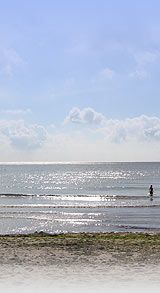5 ordspråk av Mike Dunlop
Mike Dunlop
Aantal gezegden is 2097480
varav 1407627 på engelska
Gezegde (2097480 st) Zoek
Categoriën (3944 st) Zoek
Auteurs (201303 st) Zoek
Afbeeldingen (4592 st)
Geboren (10498 st)
Gestorven (3319 st)
Datums (9520 st)
Landen (27214 st)
Idiom (4439 st)
Lengths
Toplists (6 st)
Deze website richt zich op uitdrukkingen in de Zweedse taal, en sommige onderdelen inclusief onderstaande links zijn niet vertaald in het Nederlands. Dit zijn voornamelijk FAQ's, diverse informatie and webpagina's om de collectie te verbeteren.
Barnslighet är både skattebefriat och gratis!
Vad är gezegde?
Hur funkar det?
Vanliga frågor
Om samlingen
Ordspråkshjältar
Hjälp till!
varav 1407627 på engelska
Gezegde (2097480 st) Zoek
Categoriën (3944 st) Zoek
Auteurs (201303 st) Zoek
Afbeeldingen (4592 st)
Geboren (10498 st)
Gestorven (3319 st)
Datums (9520 st)
Landen (27214 st)
Idiom (4439 st)
Lengths
Toplists (6 st)
Deze website richt zich op uitdrukkingen in de Zweedse taal, en sommige onderdelen inclusief onderstaande links zijn niet vertaald in het Nederlands. Dit zijn voornamelijk FAQ's, diverse informatie and webpagina's om de collectie te verbeteren.
Barnslighet är både skattebefriat och gratis!
Vad är gezegde?
Hur funkar det?
Vanliga frågor
Om samlingen
Ordspråkshjältar
Hjälp till!
 |
Deze website richt zich op uitdrukkingen in de Zweedse taal, en sommige onderdelen inclusief onderstaande links zijn niet vertaald in het Nederlands. Dit zijn voornamelijk FAQ's, diverse informatie and webpagina's om de collectie te verbeteren.
Barnslighet är både skattebefriat och gratis!
Vad är gezegde?
Hur funkar det?
Vanliga frågor
Om samlingen
Ordspråkshjältar
Hjälp till!
 |
